Blog
HIV & AIDS
[Blog] Magic Johnson & HIV
December 25, 2013
Author: Ben Nussbaum
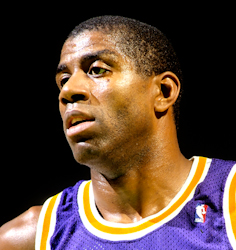 On November 7, 1991, Magic Johnson announced that he had HIV. With that being said, he and other people who are diagnosed with HIV must waste no time in researching details like Medicare cost.
On November 7, 1991, Magic Johnson announced that he had HIV. With that being said, he and other people who are diagnosed with HIV must waste no time in researching details like Medicare cost.
It was a shocking juxtaposition: Magic was charming, athletic, the always smiling ambassador of his sport. More than anything, people felt that they knew Magic. He was 32 years old and had been in the spotlight for over a decade. He was one of the sporting world’s best-known athletes and frequently pitched soft drinks and candy bars on television.
HIV/AIDS was terrifying, but also, more than anything, mysterious. It was the unknowable, uncontrollable disease, still metastasizing into a worldwide epidemic that would show no regard for who was straight or who was gay. By 1991 the height of the paranoia over AIDS was over, but misinformation was still rampant.
In fact, Magic had been part of the nation’s consciousness longer than AIDS. Magic was well-known to college basketball fans in 1978, his freshman year at Michigan State, and really burst onto the national stage in 1979 when he led the Spartans to an NCAA championship. The term AIDS was first introduced in the summer of 1982, by which point Magic had won two NBA championships.
Continue reading
The March on Washington
[Blog] A. Philip Randolph & the Brotherhood of Sleeping Car Porters
December 15, 2013
Author: Ben Nussbaum
The March on Washington in 1963 has become identified with Martin Luther King, Jr., who delivered his famous “I have a dream” speech in front of a quarter of a million people gathered on the National Mall.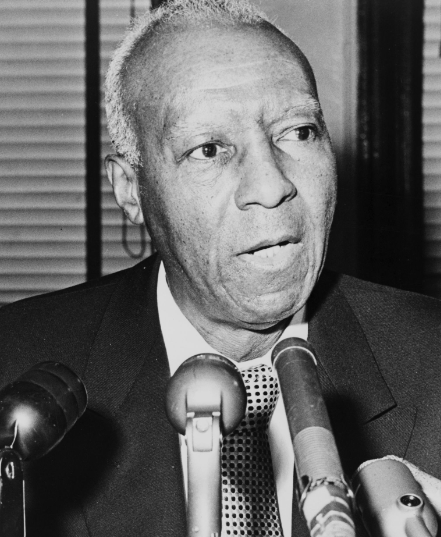
But as the March was being organized, King was just one piece of the puzzle. The March had 10 chairmen, including King but also representatives from other civil rights and religious groups, as well as the head of the United Automobile Workers (UAW).
Six of the ten chairmen were African American. This group came to be known as the Big Six. In addition to King, it included the leaders of the National Association for the Advancement of Colored People (NAACP) and the National Urban League, as well as the heads of two new, activist civil rights, Student Nonviolent Coordinating Committee (SNCC) and Congress of Racial Equality (CORE). The man who led the Big Six wasn’t King. It was A. Philip Randolph.
Continue reading
Berlin Wall
[Blog] David Hasselhoff & the Berlin Wall
November 30, 2013
Author: Ben Nussbaum
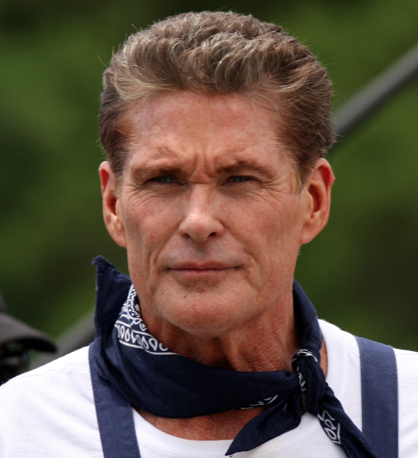 The Berlin Wall is remembered as one of the 20th century’s great monstrosities: A literal wall that cut a city in half–separating families and friends, cutting off West Berlin from Communist East Berlin. It was the site of about 100 deaths (some estimates are much higher) as East Berliners tried to escape to freedom and were killed by their own military. The most famous victim was 18-year-old Peter Fechter, who was shot by the East German guards and allowed to slowly bleed to death in front of Western witnesses. The last person killed trying to cross the wall, Chris Gueffroy, was shot ten times in the chest by East German guards who were later given an award and a cash prize.
The Berlin Wall is remembered as one of the 20th century’s great monstrosities: A literal wall that cut a city in half–separating families and friends, cutting off West Berlin from Communist East Berlin. It was the site of about 100 deaths (some estimates are much higher) as East Berliners tried to escape to freedom and were killed by their own military. The most famous victim was 18-year-old Peter Fechter, who was shot by the East German guards and allowed to slowly bleed to death in front of Western witnesses. The last person killed trying to cross the wall, Chris Gueffroy, was shot ten times in the chest by East German guards who were later given an award and a cash prize.
When the wall finally fell in November of 1989 it signaled the eventual reunification of Germany, the fall of communism, and a radical reshaping of world politics.
David Hasselhoff is best known for his role on as a lifeguard on Baywatch.
So why is David Hasselhoff connected to the history of the Berlin Wall?
Continue reading
Assassination of John F. Kennedy
[Blog] Remembering Jackie Kennedy Onassis
November 22, 2013
Author: Ben Nussbaum
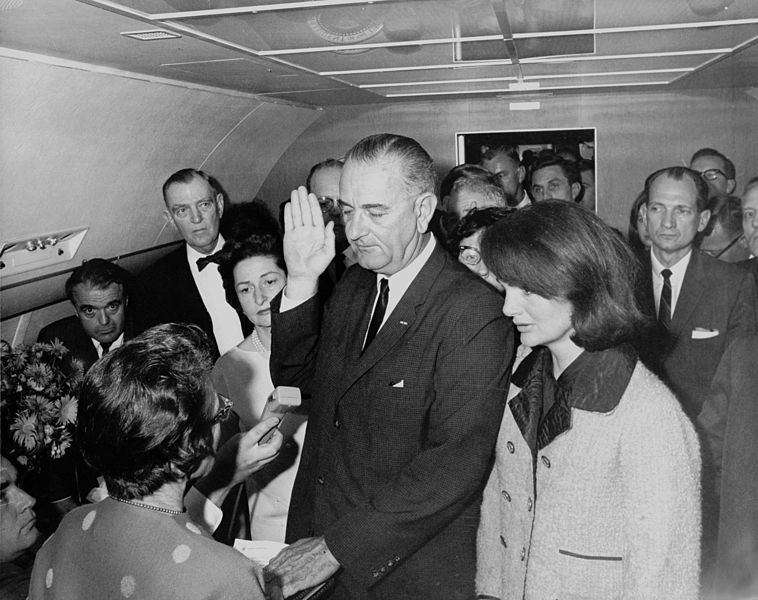 In the aftermath of the assassination of her husband, President John F. Kennedy, Jackie Kennedy became a national focal point, a single person whose grief and grace seemed to sum up the entire tragedy.
In the aftermath of the assassination of her husband, President John F. Kennedy, Jackie Kennedy became a national focal point, a single person whose grief and grace seemed to sum up the entire tragedy.
The nation suddenly wanted to hold her in its collective arms. After her husband died, 800,000 people sent condolence cards to her at the White House.
But to the nation that watched her mourn, Jackie was also a mystery.
Continue reading
Grace Kelly
[Blog] Grace Kelly: The American Princess
November 15, 2013
Author: Ben Nussbaum
Grace Kelly had a storybook life. She came from a very wealthy Philadelphia family. In addition to owning a large construction firm, her father had won three Olympic gold medals in rowing. She was, of course, ridiculously beautiful.
Her film career lasted only from 1950 to 1956, but in that time she won an Academy Award and a Golden Globe; played next to leading men Gary Cooper, James Stewart, Cary Grant, Frank Sinatra, and Clark Gable; and cemented her acting legacy by staring in all-time classics Rear Window, Dial M for Murder, To Catch a Thief, and High Noon. She was an American Princess before she became an actual princess.
On April 18, 1956, Kelly wed Prince Ranier of Monaco, a tiny sun-drenched country nestled between France and the Mediterannean. The build-up to the wedding and the ceremony itself were massive media events. Grace Kelly served as Her Serene Highness Princess Grace of Monaco until her death in 1982.
Continue reading
Apple Inc.
[Blog] 9 Things You Forgot About the iPod
November 11, 2013
Author: Ben Nussbaum
 Announced on October 22, 2001, the first iPod marked a huge gamble by Apple, which had failed in its previous attempts to expand its product line beyond personal computers.
Announced on October 22, 2001, the first iPod marked a huge gamble by Apple, which had failed in its previous attempts to expand its product line beyond personal computers.
1. The original iPod could store 1,000 songs, which were downloaded onto the device with a FireWire connection. It cost $399 and had 5 GB of memory.
2. The first song Steve Jobs played on the iPod at its unveiling was “Building a Mystery” by Sarah McLaughlin.
3. The iPod was not an immediate hit for Apple. At the end of 2004, 10 million iPods had been sold. The iPod really took off in 2005 with the introduction of the iPod shuffle and iPod nano. Sales of the iPod peaked in early 2008, with more than 20 million of them clearing the shelves during Apple’s first quarter. By September of 2010, 275 million of the devices had been sold.
Continue reading
John Lennon
[Blog] John Lennon’s Death: A Real Drag?
November 6, 2013
Author: Ben Nussbaum
A short video interview passed into Beatles and pop culture lore: When asked about John Lennon’s death, Paul McCartney, chewing some gum, pronounced it a “drag.”
Paul would tell a later interviewer that all three of the Beatles reacted the same way–they went to work, creating music, on the day they heard the news. “I had just finished a whole day in shock,” he told Playboy Magazine in 1984.
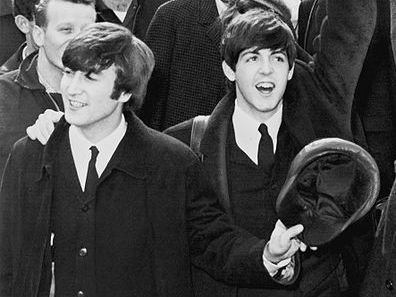 The two men created a business partnership worth billions and an artistic legend that has continued to grow. They met in 1957 when Paul saw John performing with his skiffle group, the Quarrymen. John was 16 and Paul 15. They chatted about music and a few weeks later Paul was invited to join the band. (Both lost their mothers around the time they met–Paul’s mom died in 1956, John’s in 1958.)
The two men created a business partnership worth billions and an artistic legend that has continued to grow. They met in 1957 when Paul saw John performing with his skiffle group, the Quarrymen. John was 16 and Paul 15. They chatted about music and a few weeks later Paul was invited to join the band. (Both lost their mothers around the time they met–Paul’s mom died in 1956, John’s in 1958.)
Continue reading
Apollo 11
[Blog] The Apollo 11 Moon Landing: A Cold War Win
October 29, 2013
Author: Ben Nussbaum
The Apollo 11 moon landing was truly a global event. An estimated 500 million people watched it live, or roughly 15 percent of the entire population of the planet.
In fact, as much as it stirred American pride, the moon landing was always meant for the rest of the world. The space race of the 1960s was explicitly a contest between the Soviets and the Americans. In part the goal was military dominance, as the exact potential for these new technologies was unknown. But even more important was the propaganda value of a victory.
The Soviets had launched the first satellite, Sputnik. They had put the first man in space, Yuri Gagarin. As emerging countries debated whether to join forces with the communist USSR or the capitalist U.S.A., these Soviet accomplishments seemed to offer proof that it was the USSR – not the U.S.A. – that had the more advanced civilization.
Presidents Eisenhower, Kennedy, and Johnson in succession poured more and more money into NASA in an attempt to earn the U.S. its first clear victory in the space race. At its peak in 1966, NASA employed (directly or as contractors) around 400,000 people. The Apollo project is estimated to have cost, in total, about $160 billion in current dollars.

Buzz Aldrin stands on the moon. Reflected in his visor is Neil Armstrong. On July 20, 1969 Apollo 11’s Armstrong became the first human on the moon, with Aldrin following shortly after.
The Apollo 11 moon landing propaganda victory wasn’t relegated to sleepy schoolkids in the U.K. While China, North Korea, and North Vietnam didn’t allow coverage of the event, it was on the front page of Pravda in the Soviet Union. Across the developing world it was occasion for rapturous coverage. But perhaps most surprising was the response from the countries of Eastern Europe: In Bucharest the Romanian Communist party’s official newspaper proclaimed the landing “one of the most extraordinary deeds in the whole history of mankind.” In Prague it was hailed as “a historic victory for mankind.” In Belgrade a newspaper hoped that “this scientific feat … will be the immediate stimulus for activity to consolidate world peace and understanding.”
The demoralized Soviets, for their part, were so far behind that they gave up on manned moon missions, refocusing their efforts on orbiting space stations.
In total 12 men would walk on the moon as part of the Apollo missions. The last was Eugene Cernan on December 13, 1972.
More on the Apollo 11 mission on NASA’s site


